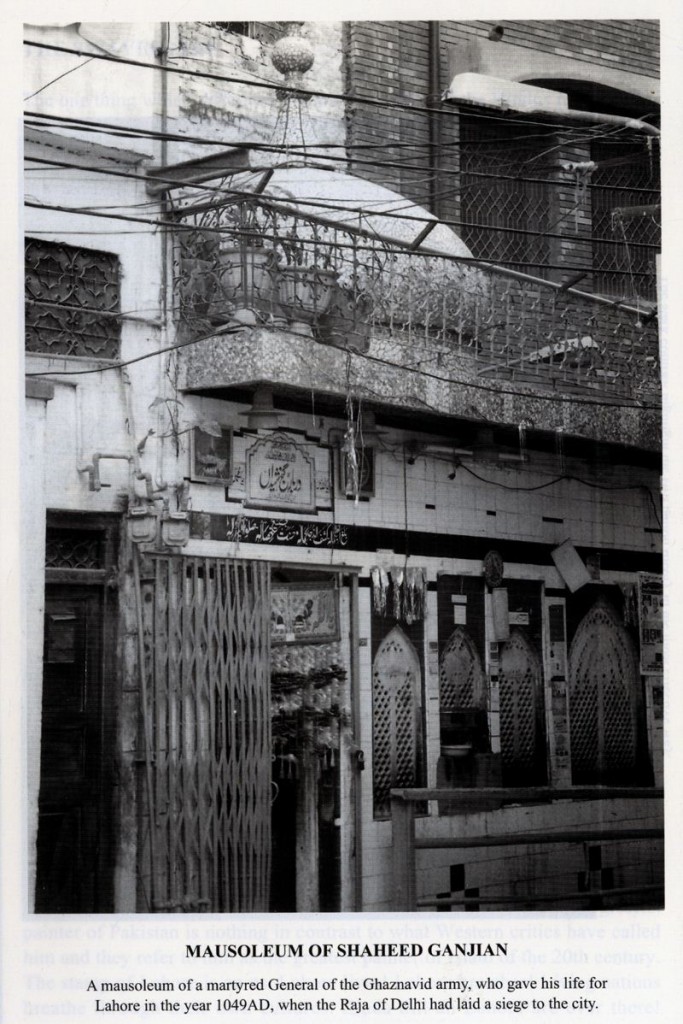THE ATTACK ON LAHORE (1043-1049)
MARTYRDOM AT ITS BEST
A memory of national resolve

In the year 435 AH (1043 AD), the Raja of Delhi was able to rally other Hindu Rajas to accost and drive the Muslims out of India. The religious motivation drove them into a frenzy, for they were loosing their commoner subjects by the thousands, each day, through voluntary conversions. Fearing there would be no vassals left to serve them, they started recovering one town after another. They took Hansi, Thanesar and then Nagar Kot. In the year 441 AH (1049 AD), they laid a siege to the city of Lahore.
Sultan Maudud was not in Lahore. Maudud undertook a campaign against Khurasan, and had gone through the city of Kabul. He reached the Fort of Sankot and was seized with a violent bowel movement (food poisoning of the worst kind). On a litter tied behind a horse, he was taken to Ghazni, where he died, and the rest of the time there was chaotic fighting for the throne. A four year old son was put on the throne, which led to further infighting in the Ghaznavid ranks.
Without the protection of the Sultan, it was up to the citizens of Lahore to defend themselves. The Hindus gained initially a lot of ground in victory. Their number was ten thousand horsemen, as well as innumerable foot soldiers. Five thousand Muslims were taken prisoners, mosques were razed o the ground, and a general loot and plunder started outside Lahore in the suburbs. A group of valiant soldiers assembled in the Purani Kotwali Lahore and resolved to face the wrath of the Hindus. The siege was for about seven months and the soldiers held their ground. Thousands died defending Lahore, including many of their Generals who were controlling the action. The nature of Lahore was thus that in the course of fifty years or so, the citizens of Lahore had made the city as their own.
The soldiers who gave their life for Lahore and by their action were able to save Lahore. The place where they died was Mohalla Sadhoaun, Mohalla Chabuk Sawaran and the area of Chinay-wali mosque (the residential area of M.A. Rahman Chughtai and his ancestors). This place was known as GANJ SHAHEEDAN, and they were buried at the same place where they died with full honour, some individually, some in mass graves. A few graves existed till fifty years ago, and now the 963 years old incident is represented by the Mazar of one unnamed General only. I too was born in Lahore, very near the mausoleum of Ayaz Abu-Najm and my ancestors lived in the Mohalla Chabuk Sawaran, the area of the Ganj Shaheedan. The soil of Lahore on which you are born and where you live welcomes also those who die. The warmth of the soil is there for all to taste, but more specifically for the SHAHEEDS, the people who give their life in defending Lahore.
After the 1965 war, the brother of Major Aziz Bhatti came back from Dacca, and opened the GO-GO restaurant in Liberty Market Lahore, frequented by most, before it got vacated out of the premises. The nephew of the Shaheed was with us in Forman Christian College. In a sudden sweep, the Shaheed and his aura walks tall in the area where they gave their life, and in Paradise, which await only selected people from Planet Earth.. Allah-o-Akbar!

Does anyone know of the real old stuff on Lahore?
what’s the exact location of this mausoluem?
Inside Rang Mahall, near Mohalla Kakey Zaiyan and Mohalla Chabuk Sawaran. Enter through the Panday wala bazaar.
ok got it.
will go there to offer Dua.